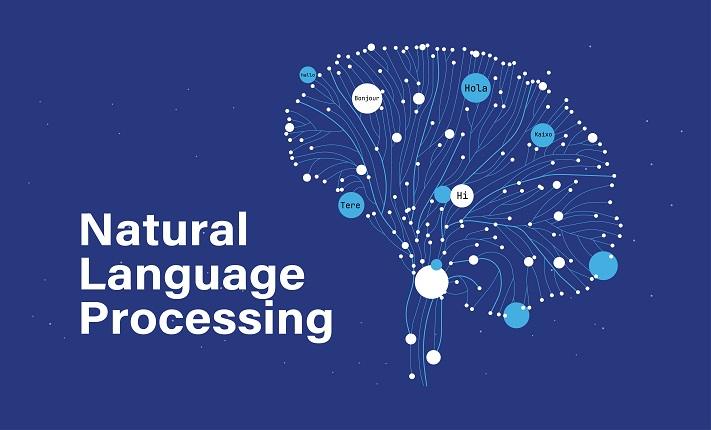The healthcare industry is rapidly evolving, with artificial intelligence (AI) playing a pivotal role in improving patient outcomes, reducing costs, and enhancing operational efficiency. Among the most impactful AI technologies, Best Natural Language Processing (NLP) stands out for its ability to process, interpret, and analyze vast amounts of unstructured data in healthcare settings. Whether it’s patient records, medical literature, or clinical notes, NLP enables healthcare professionals to gain valuable insights, automate administrative tasks, and ultimately improve patient care.
In this blog post, we’ll explore some of the Natural Language Processing solutions for healthcare and how they are transforming the industry.
1. Clinical Documentation and EHR Management
Electronic Health Records (EHRs) have revolutionized the way healthcare professionals store and manage patient data. However, the challenge remains in processing the vast amount of unstructured text within these records—such as physician notes, lab results, and patient history. This is where Natural Language Processing solutions come into play.
By applying NLP to clinical documentation, healthcare providers can extract meaningful data from EHRs, enabling faster decision-making. For example, NLP can identify key information such as diagnoses, medications, and allergies, organizing it in a structured format. This significantly reduces the time healthcare professionals spend manually reviewing patient records, allowing them to focus more on patient care.
Moreover, NLP-powered systems can help identify trends and patterns within clinical data, such as potential health risks or medication interactions, that might otherwise be overlooked. By implementing Best Natural Language Processing solutions, hospitals and clinics can improve their workflows and enhance overall patient outcomes.
2. Medical Coding and Billing Automation
Medical coding and billing are essential functions in healthcare, but they are often time-consuming and prone to human error. NLP solutions can automate and streamline these tasks, improving accuracy and efficiency in the billing process. By analyzing clinical notes, NLP algorithms can automatically assign the correct medical codes for procedures, diagnoses, and treatments.
Natural Language Processing tools can help reduce errors in medical coding, which in turn helps avoid costly billing mistakes and ensures that healthcare providers are properly reimbursed. Furthermore, automation allows billing departments to focus on more complex issues, reducing administrative overhead and improving revenue cycle management.
3. Clinical Decision Support Systems (CDSS)
Clinical Decision Support Systems (CDSS) provide healthcare professionals with evidence-based recommendations to assist in making informed decisions about patient care. By integrating Natural Language Processing techniques, CDSS can extract insights from unstructured data, such as medical literature, clinical notes, and patient records, to deliver more accurate and relevant recommendations.
For example, NLP can be used to analyze medical research papers and clinical trial results, identifying new treatments or drug interactions. This helps clinicians stay updated on the latest medical advancements and provides them with the most current information when diagnosing and treating patients. By leveraging Best Natural Language Processing solutions, healthcare providers can enhance their decision-making capabilities, leading to improved patient outcomes.
4. Predictive Analytics for Disease Detection
NLP is also playing a significant role in the early detection of diseases and predicting patient outcomes. By analyzing patient data from multiple sources—such as EHRs, lab reports, and even social media posts—NLP algorithms can detect patterns that may indicate the early stages of a disease. This predictive ability can be crucial for conditions like cancer, diabetes, and cardiovascular disease, where early intervention is key to improving prognosis.
For instance, NLP models can scan patient records for symptoms or risk factors that might suggest the onset of a chronic illness. These systems can also track changes in a patient’s health over time, allowing healthcare providers to intervene earlier. By implementing Natural Language Processing solutions, healthcare professionals can significantly enhance their ability to diagnose and treat patients proactively.
5. Medical Literature Mining and Research
The healthcare industry produces an overwhelming amount of research and medical literature every day. With so much information available, it can be difficult for healthcare professionals and researchers to stay on top of the latest findings. Best Natural Language Processing solutions offer a way to automate the process of sifting through medical literature to extract valuable insights.
NLP algorithms can analyze research papers, clinical trial results, and medical journals to identify relevant trends, keywords, and findings. This enables healthcare professionals and researchers to quickly access the information they need to stay informed and make evidence-based decisions. Additionally, NLP can be used to identify gaps in existing research, driving innovation and helping to shape future healthcare practices.
By using Best Natural Language Processing tools for literature mining, healthcare providers can improve their research capabilities and ensure that their practices are based on the most up-to-date information available.
6. Patient Interaction and Chatbots
In today’s digital age, patients expect immediate access to healthcare information and support. NLP-powered chatbots and virtual assistants are helping to meet this demand by providing patients with real-time answers to their questions, appointment scheduling, and even symptom checking.
These AI-driven systems can interpret and understand patient inquiries, providing accurate, timely responses. Whether a patient is seeking information about a medical condition or trying to schedule a visit, NLP makes it possible for chatbots to deliver human-like interactions that feel personalized and helpful.
By utilizing Best Natural Language Processing solutions, healthcare providers can enhance patient engagement and provide better access to healthcare services, all while reducing the burden on administrative staff and physicians.
7. Speech-to-Text for Doctors and Healthcare Providers
For many healthcare professionals, documenting patient interactions and maintaining accurate records is a tedious but essential part of their work. Speech-to-text technology powered by Best Natural Language Processing is helping streamline this process, allowing doctors and nurses to dictate their notes, which are then transcribed into written form.
NLP speech recognition models can accurately convert spoken language into text, saving healthcare providers time and reducing the likelihood of errors in patient records. These systems can also recognize medical terminology, ensuring that the transcriptions are both accurate and relevant.
By leveraging Best Natural Language Processing speech-to-text tools, healthcare organizations can improve their documentation workflows, enhance productivity, and reduce the administrative burden on their staff.
Conclusion
The applications of Best Natural Language Processing in healthcare are vast and continue to evolve. From automating administrative tasks to improving clinical decision-making and patient care, NLP is helping healthcare providers operate more efficiently and deliver better outcomes. By implementing advanced NLP solutions, hospitals, clinics, and research institutions can unlock valuable insights from their data, optimize workflows, and enhance patient experiences.
As healthcare continues to embrace digital transformation, Best Natural Language Processing will play an increasingly important role in shaping the future of the industry. To learn more about how NLP can improve your healthcare organization, explore our advanced NLP services today!
Stay updated with our latest news and offerings! Follow us on Facebook, Instagram, and LinkedIn.


